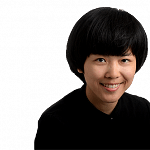-
BOOK IT / CHRISTIANITY IN ASIA: SACRED ART AND VISUAL SPLENDOUR
-
WHERE: Asian Civilisations Museum, 1 Empress Place
WHEN: Till Sept 11, 10am to 7pm (Saturday to Thursday), 10am to 9pm (Friday)
ADMISSION: $9 (Singaporeans and permanent residents), $15 (foreigners; includes admission to permanent galleries)
Faith crosses into art
More than 150 artefacts at a new exhibition aim to show how Christianity inspired art in Asia
An ambitious exhibition, four years in the making, has opened at the Asian Civilisations Museum.
The show, which spotlights Christianity in Asia through more than 150 splendorous objects ranging from intricate miniatures to exquisite ivory carvings, is the first of its kind in the world.
Curator Clement Onn says that while there have been exhibitions on Christianity in Asian countries such as Japan or the Philippines, none has previously covered the region as a whole or focused on Christian art made in Asia.
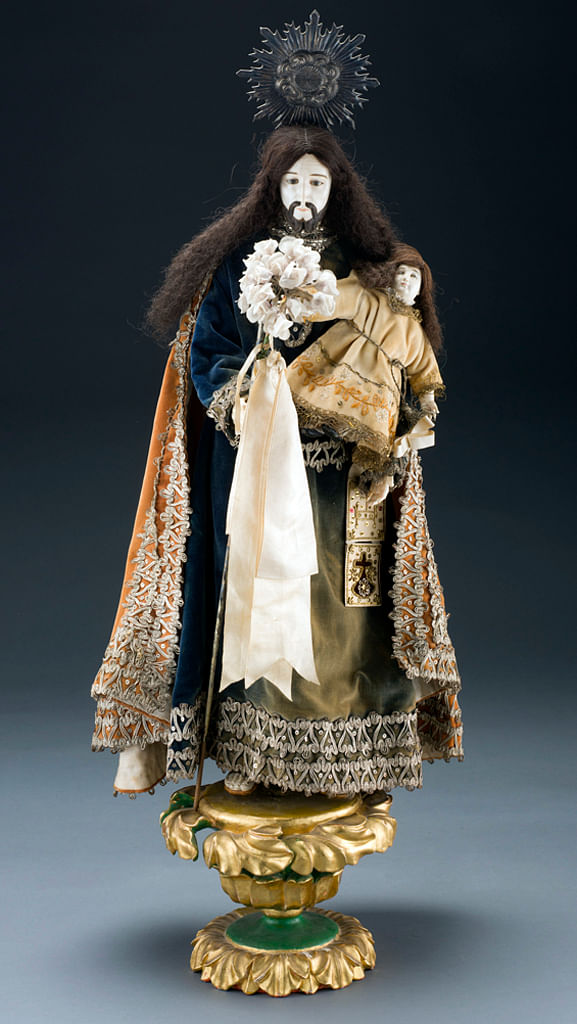
The exhibition includes objects loaned from 20 institutions and private collections from countries such as France, Italy, Portugal and the Philippines.
On staging the exhibition, the museum's director, Dr Alan Chong, says: "On one level, the history of Asia is the history of different religions because they spread quickly from one region to another. Christianity has been in Asia since the 7th century and it has played a big role throughout. It has entered courts, it has inspired people, it has helped educate many people who themselves may not have converted.
"It has been a part of the intellectual fabric of Asia and it is one thing that binds the continent and different cultures together, which is what we look to present at the museum."
The exhibition focuses on how Christianity inspired art in Asia and spurred the exchange of artistic knowledge and expression in the world. The artefacts on show are therefore not all liturgical objects and their makers and patrons not necessarily Christians, says independent scholar and guest curator, Dr Pedro Carvalho.
What this suggests, says Mr Onn, is that art and culture flourished "when there was tolerance, understanding and curiosity" towards different faiths.
Such open-mindedness, however, has not prevailed throughout history. Dr Chong says: "There have been times of great tension, war and persecution not only for Christianity, but also for all religions in Asia. In our small way, we hope that this exhibition builds understanding between religions and reminds ourselves that Christianity has, for more than 1,000 years, played an important role in the life of Asia."
Story of Christianity in Asia in 10 objects
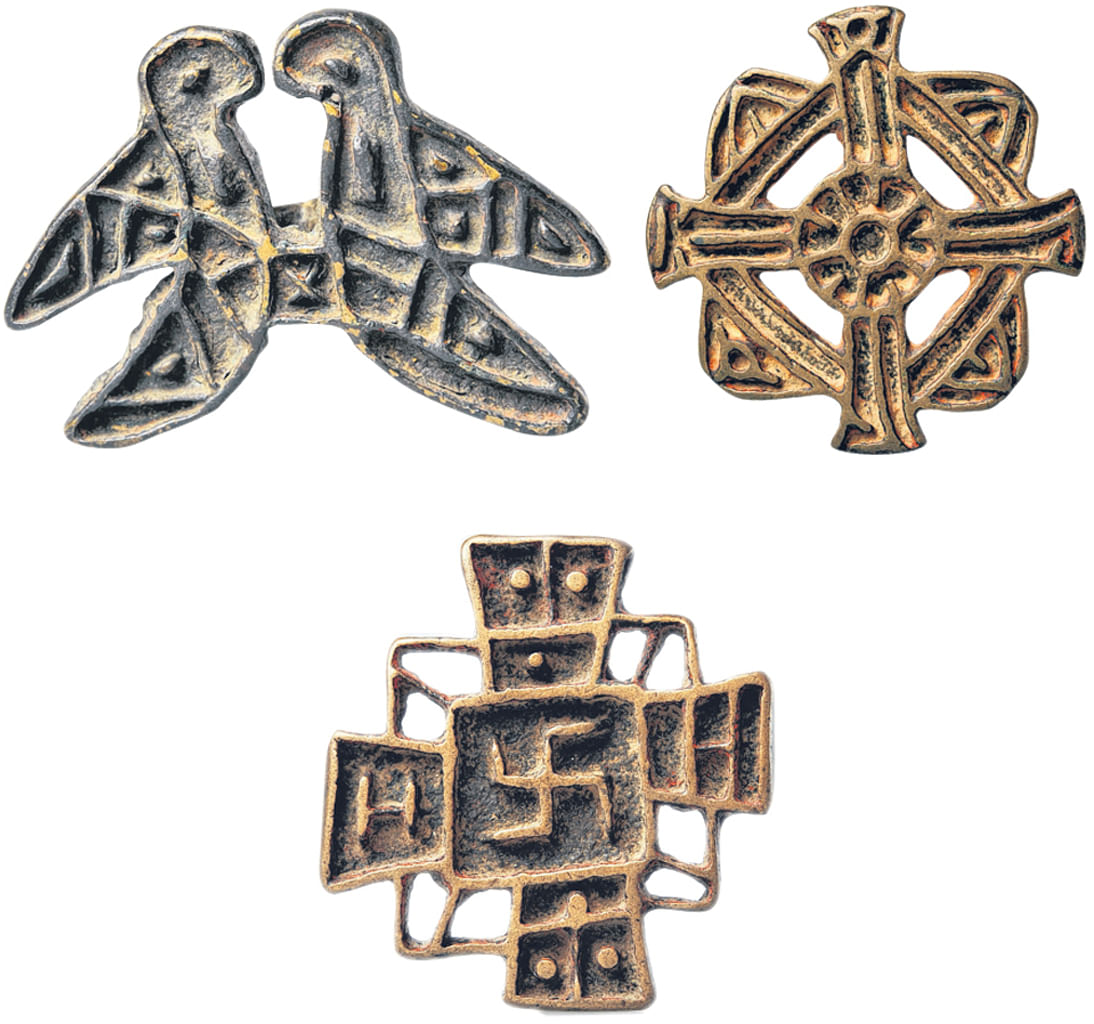
1. Crosses of the Church of the East China, Yuan Dynasty (1272 to 1368), bronze
The earliest records of Christianity in China date to the 7th century, during the reign of Tang Dynasty Emperor Taizong. It had spread from Persia to Central Asia along the Silk Road.
These crosses, examples of early Christian art in Asia, were cast in north-west China and, of the 900 discovered, no two are alike. Many of them bear geometric designs and have radial patterns. Some also feature the swastika symbol, which is associated with Buddhism, and images of birds, possibly a motif borrowed from Persian art. Such cross-cultural influence is common in Christian art made in Asia.
Traces of red ink have been found on the artefacts and each one has a loop on its back, suggesting that they may have been used as seals and worn on belts.
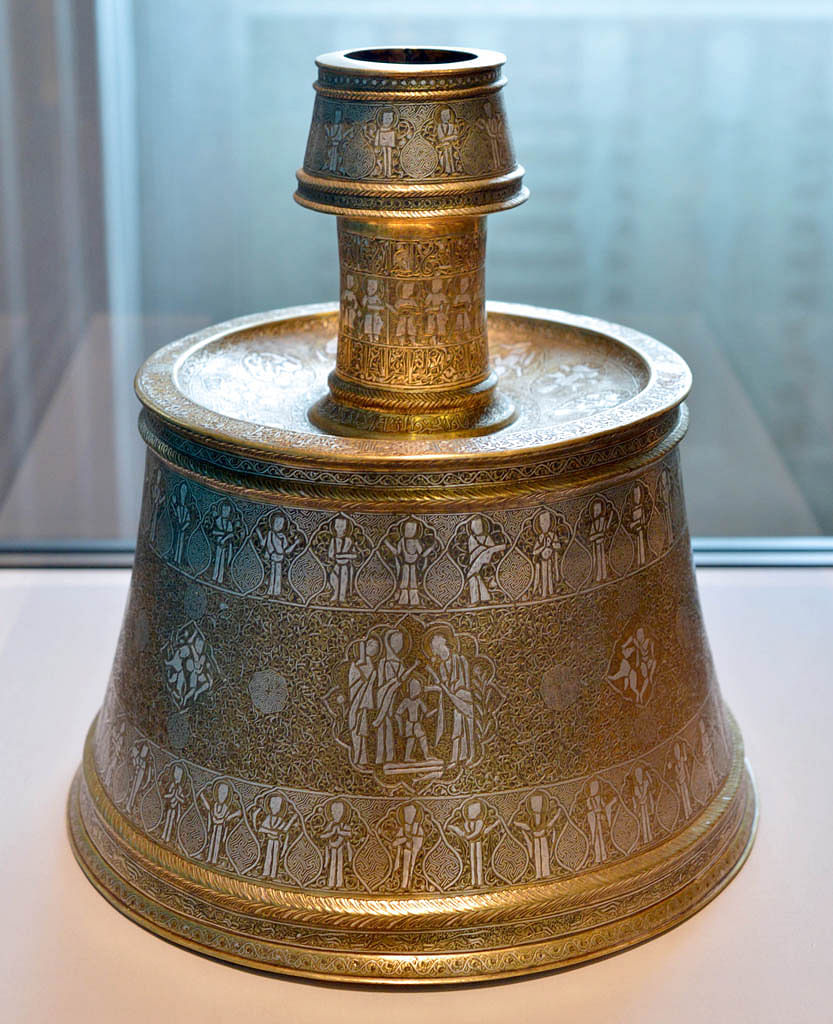
2. Candlestick with Christian scenes Dawud ibn Salama al-Mawsili, Syria, 1248 to 1249, copper alloy inlaid with silver, black paste
This candlestick is signed Dawud ibn Salama al-Mawsili, likely the name of its craftsman.
The base has intricate vegetal patterns and four lobed medallions depicting scenes from the life of Christ, including his baptism. The exquisite workmanship suggests that the candlestick could have been commissioned by Christian patrons for a church.
But the candlestick's shoulder is decorated with signs of the zodiac, which was common in Islamic art of the time, when the region of Egypt, Syria and Palestine was ruled by the Muslim Ayyubid dynasty.
This introduction of local motifs made Asian Christian art distinct from those made in Europe.
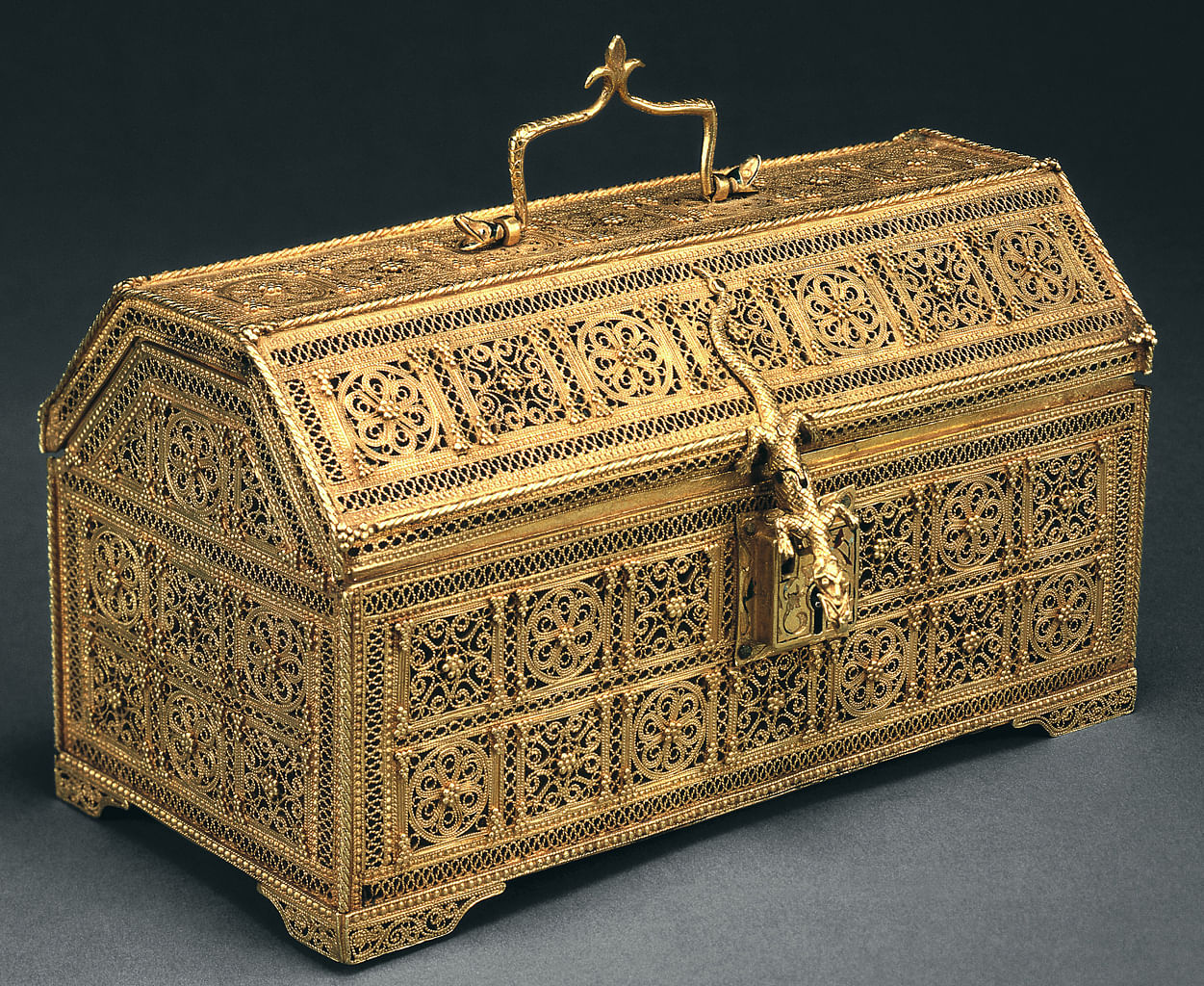
3. Casket Likely India, Goa, second-half of the 16th century, gold and traces of enamel
This casket of gold filigree bears no obvious Christian symbols. It is covered in intricate geometric patterns that highlight the skill of Goa's artisans. It became a liturgical object, however, after it was gifted to an Augustinian monastery in Portugal in the 17th century and used during mass to hold the Eucharist.
The production of this casket was spurred by the presence of Christianity in Goa following its colonisation in the 16th century by the Portuguese. It was gifted to the monastery in honour of Afonso de Albuquerque, governor of Portuguese India from 1509 to 1515.

4. Mary Magdalene presenting ointment to Jesus, illustration to the Mirror Of Holiness Mughal India, Allahabad, 1602 to 1604, gouache and gold on paper
This painting from an illuminated manuscript is one of eight on display in the exhibition and recently acquired by the museum.
The miniatures are imaginative interpretations of Jesus' life based on the text, Mirror Of Holiness, by Jesuit priest Jerome Xavier. He lived in the Mughal court for almost two decades as a guest of Emperor Akbar and his son, Jahangir, who succeeded the throne.
He had been commissioned by Muslim ruler Akbar to write about the life of Jesus, who is considered a prophet in Islam. His text drew on the gospels and apocryphal sources; the illustrations were commissioned by Jahangir. Both father and son were interested in Christianity, but were not converts.
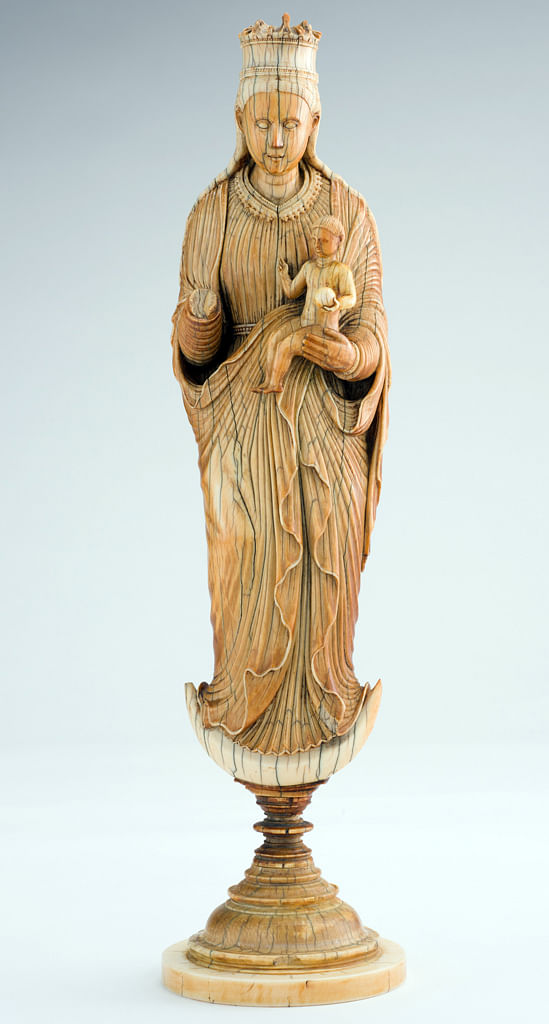
5. Virgin and Child Sri Lanka, mid-16th century, ivory
This sculpture, carved from a piece of ivory, is an example of how new motifs appear in Christian art in Asia when they are made by local artists who are likely of a different faith. The influence of Western iconography is seen in the depiction of the Virgin and Child. She is shown as queen of heaven with a crown on her head. The infant Jesus is depicted as saviour of the world, with his right hand raised in blessing and his left hand holding an orb, demonstrating his sovereignty.
But the Virgin and Child each have three lines incised on their necks, a distinguishing mark for Buddha in art. This suggests that the local artist, regardless of faith, regarded the Virgin and Child as sacred figures.
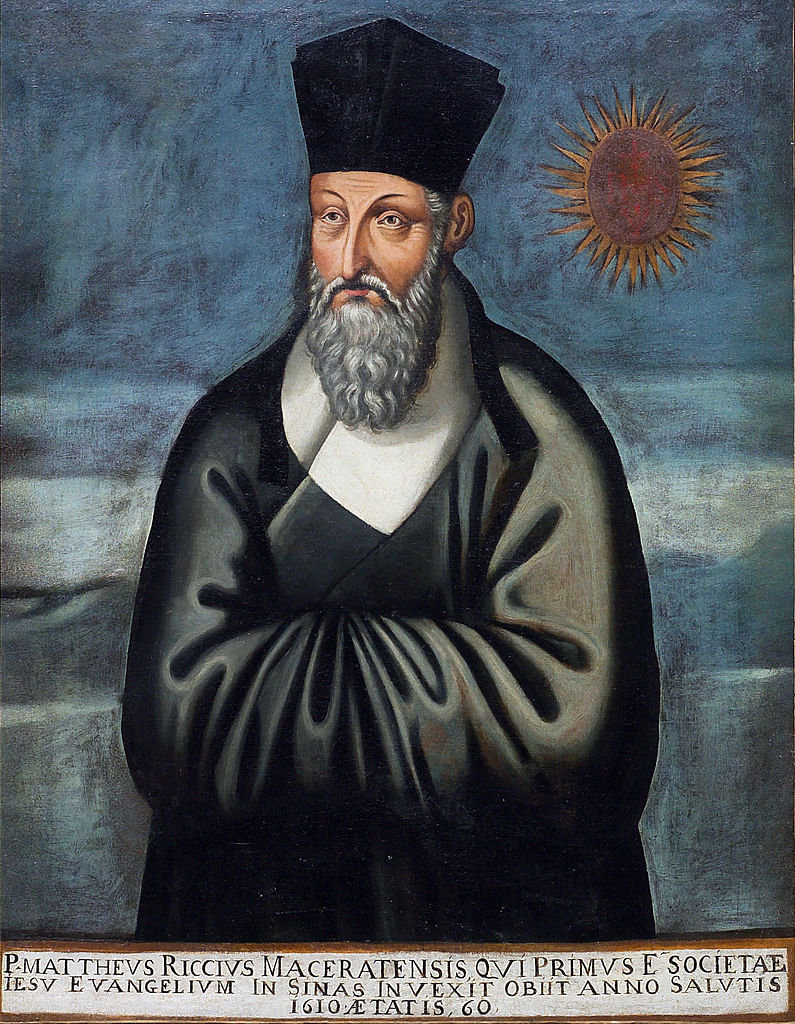
6. Portrait of Matteo Ricci Emmanuele Pereira, China, Beijing, 1610, oil on canvas
One way Christianity spread in Asia was through missionaries and the Italian Jesuit missionary Matteo Ricci (1552 to 1610) was among those who went to China. He adopted the Chinese customs of the time and is shown in this portrait wearing the robes and four-corner hat of a Confucian scholar. This only known portrait of him was painted after his death by his assistant in China, Emmanuele Pereira.
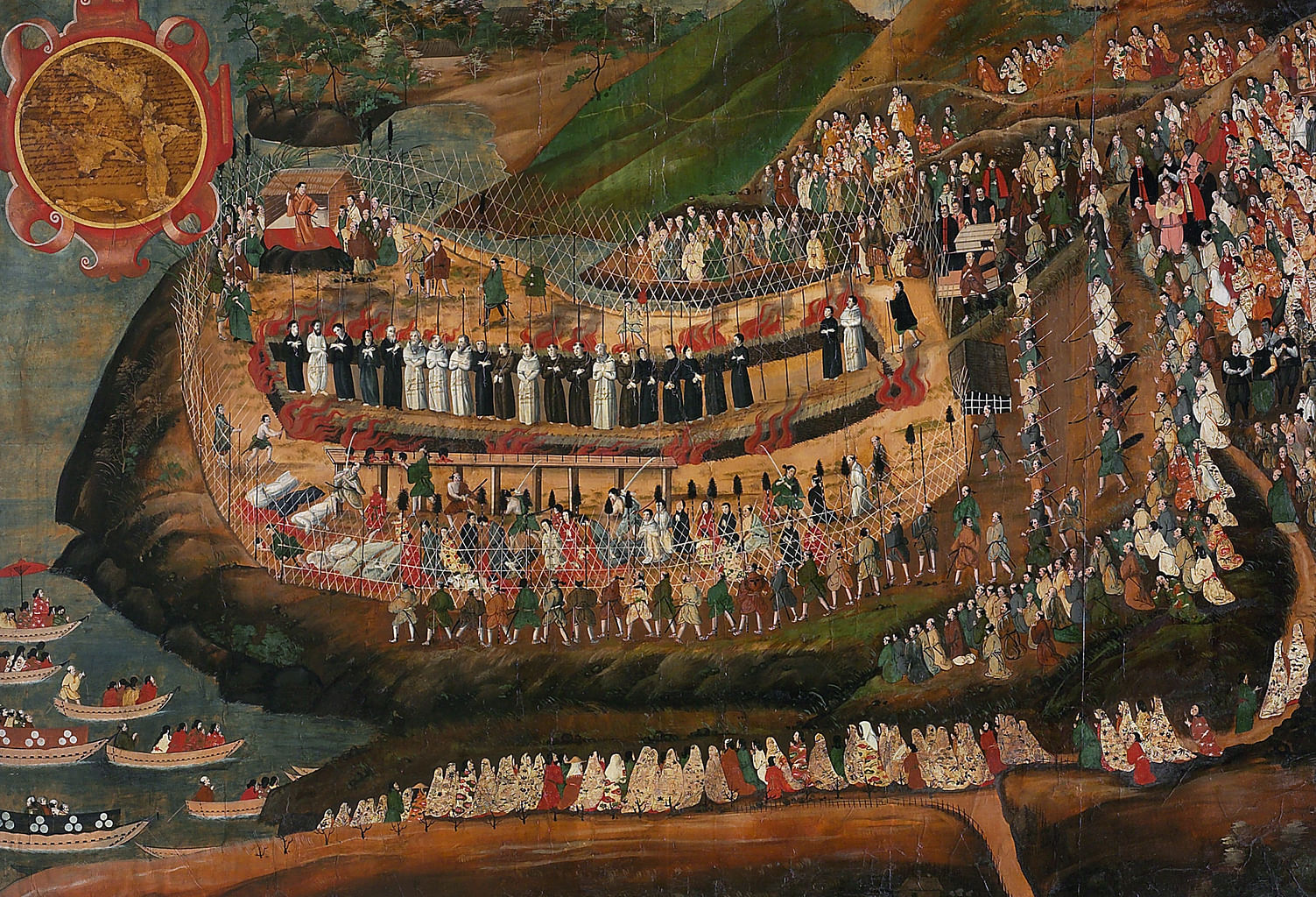
7. Martyrdom of Nagasaki, 1622 Probably China, Macau, mid-17th century, colour on paper
The spread of Christianity did not go unopposed in Asia. This painting records the mass killing of Christians in Nagasaki, Japan, in 1622. More than 55 Christians, including Europeans, Japanese and Koreans, were publicly executed. The precise details suggest that it was painted by an eyewitness, likely an artist who had trained at the Jesuit Painting School in Japan, and made later in Macau.
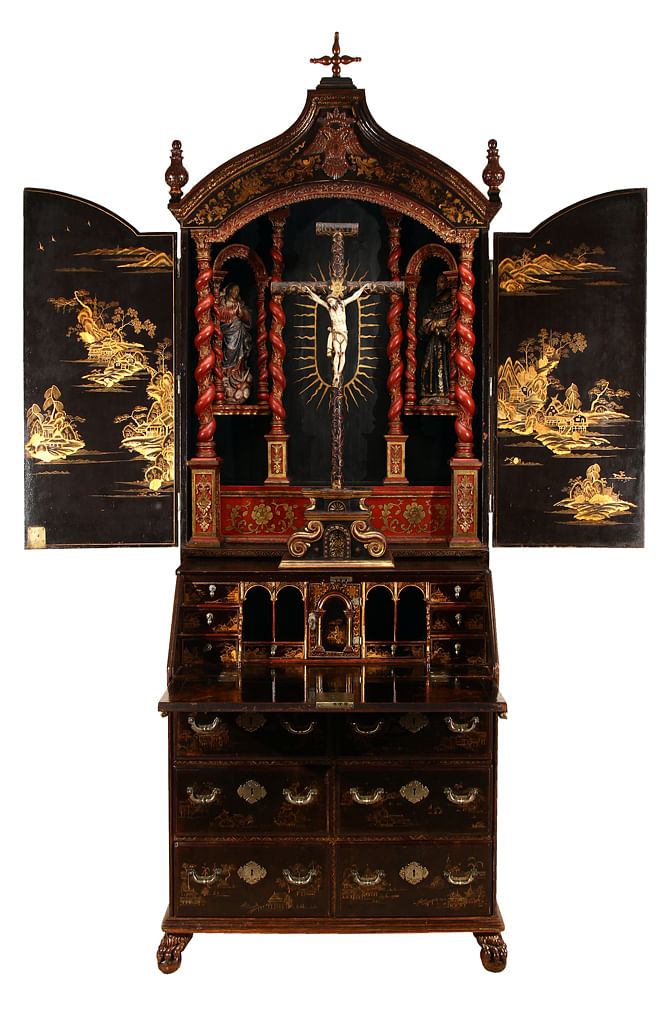
8. Bureau shrine China, 1730s, wood, gold, lacquer, silver, brass
This writing desk highlights the way cross-cultural influences shaped the aesthetics of Christian art made in Asia. Its form is derived from 18th-century Queen Anne-style bureau bookcases, but it was likely made in China, based on its light brown lacquer and gilded decoration, which recalls Chinese landscape paintings.
At its apex are a cross and the crowned double-headed eagle emblem that belongs to the Catholic Order of St Augustine. The top half of the bureau opens up to reveal a private altar.
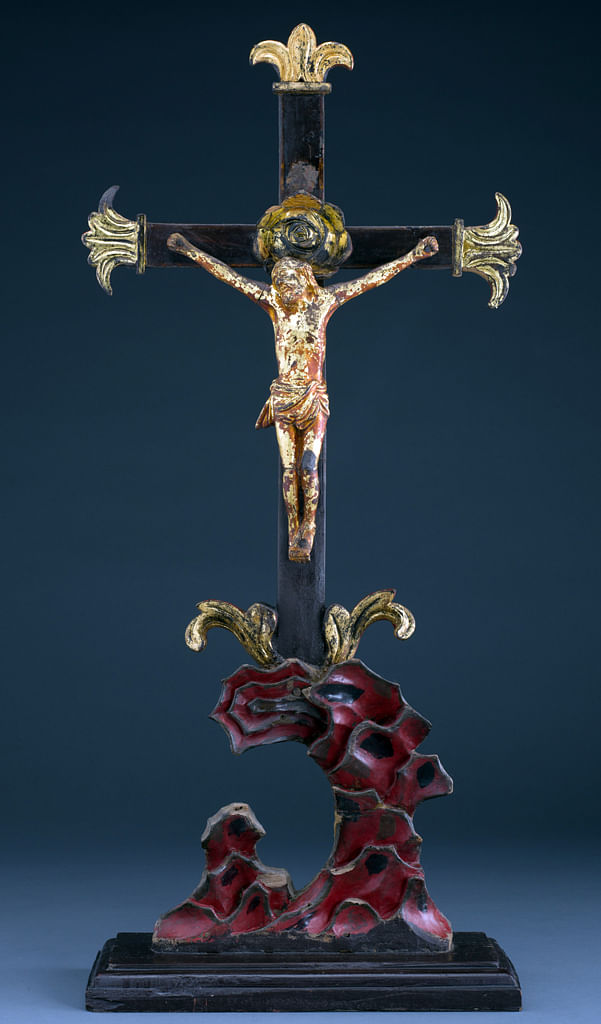
9. Crucifixion Vietnam, 19th century, painted wood
The figure of Christ on a cross with floral terminals is a traditional European image, but it is unusual in Western Christian iconography for the halo to be carved as a flower and for the base to be sculpted like a Chinese scholar's rock. The unusual mix of motifs led to new forms of Christian art.
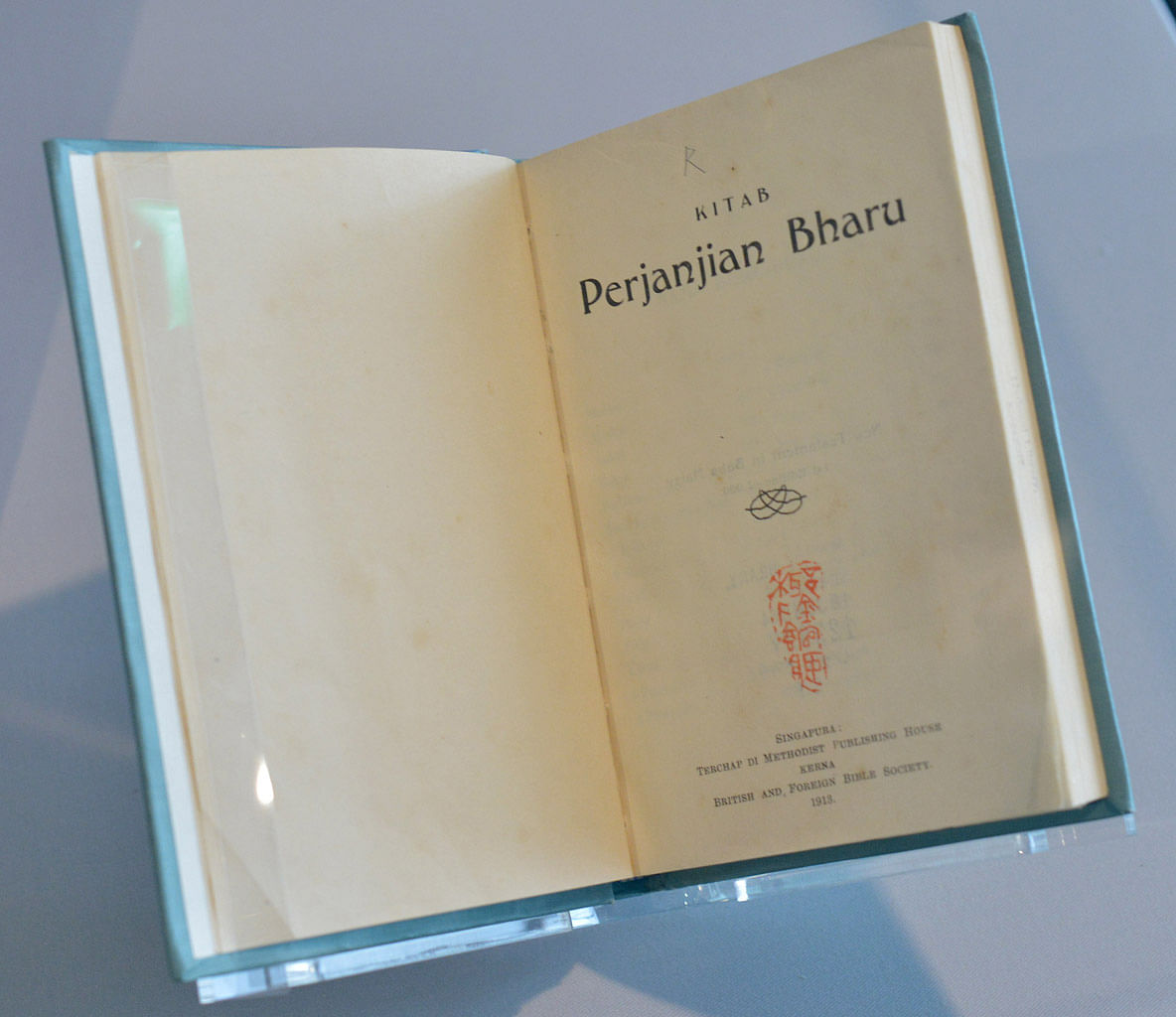
10. Kitab Perjanjian Bharu (New Testament in Baba Malay) Translated by William Shellabear, Singapore, Methodist Publishing House, 1913
Christian literature was published in Singapore from as early as the 1800s. This book is the first translation of the New Testament Bible into Baba Malay, the language of the Peranakan Chinese. The Peranakans were among the first in the region to convert to Christianity. Translator Shellabear was a British Methodist missionary in Malaya and Singapore.
Correction note: An earlier version of the story stated the name of the exhibition's curator as Clement Oon. This is incorrect. It should be Clement Onn. We are sorry for the error.
Join ST's Telegram channel and get the latest breaking news delivered to you.
A version of this article appeared in the print edition of The Straits Times on May 31, 2016, with the headline Faith crosses into art. Subscribe
